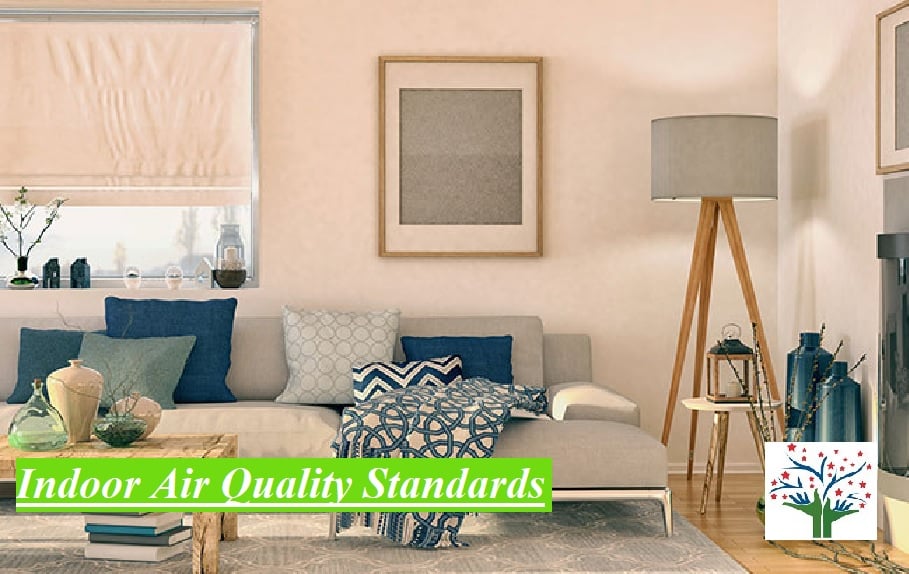Indoor Air Quality Testing Standards
Indoor Air Quality Standards are the permissible limit for different indoor air pollutants & factors that affect indoor air quality. As per Environmental bodies like EPA or CPCB, it should be Below limits to keep environmental balance.
A home is a place where we feel safe, don’t we? But, are we truly safe? Are we truly safe from all the bacteria, viruses and indoor air pollutants lingering in our home?
It is stated by scientists that indoor air can be more polluted than the air outside.
You must be wondering how?
When it comes to indoor air, due to improper ventilation the pollutants get trapped indoors and there is a low exchange of indoor air with fresh air, thus making us prone to getting affected by indoor air pollutants.
How to ensure we have good Indoor Air Quality?
To keep our home healthy and safe, we can always do an indoor air quality assessment. For this, we can always hire professionals (That’s Us !) to analyse our indoor air quality or buy indoor air quality test kits to analyse our indoor air quality by our self.
But any assessment/analysis is not complete until you conclude. To conclude about the quality of our indoor air we must first compare the results with some standards/guidelines and then rate the quality of indoor air based on that standards/guidelines.
How would we rate our Indoor Air Quality?
To be able to easily rate the quality of indoor air, certain guidelines/standards have been designed. These standards are different for each country. The reason for them to be different is every place has different climatic conditions and different pollutant range.
IAQ Testing Standards Used in India
In India, no separate IAQ standards/guidelines are yet designed. But, some components involved in determining indoor air quality are considered in the National Building Code 2016 (NBC). The other standards we may look up to are given by World Health Organisation (WHO), Occupational Safety and Health Administration (OSHA) and the American Society of Heating, Refrigerating and Air-Conditioning Engineers (ASHRAE).
Learn more about Indoor Air Quality and Health
Why are IAQS guidelines designed?
Back in school after our exams, we used to get grades, right? These grades; A, B, C, D were set on some guidelines; like if a student scores above 80 he gets an A grade and so on.
Thus, these guidelines give us a framework and help us in a way to achieve the best.
In scientific analysis, the standards/guidelines are based on looking towards the safety of the people. These are set according to the pollutant and its ability to affect us. Thus the standards/guidelines are set at the lowest level and this level is known as the permissible level. To achieve good indoor air quality, the pollutant levels in your indoor air should all be way below the permissible levels.
Indoor Air Quality Testing Standards:
The table below gives a gist of IAQ testing standards and the permissible limit for different indoor air pollutants and factors that affect indoor air quality.
| Indoor Air Quality Parameters | Indoor Air Quality Standards | |||
|---|---|---|---|---|
| NBC 2016 | ASHRAE | WHO | OSHA | |
| CO | 20 mg/m3 | 9 ppm (8 hours) | 10 mg/m3 | 50 ppm (8 hours) |
| CO2 | – | 1000 ppm | – | 5000 ppm |
| PM | 60 µg/m3 | – | – | – |
| PM 10 | – | 50 µg/m3 | 15 mg/m3 | |
| PM 2.5 | – | – | 25 µg/m3 | 5 mg/m3 |
| SO2 | 80 µg/m3 | – | 20 µg/m3 | 5 ppm (8 hours) |
| NOX | 20 µg/m3 | – | – | – |
| NO2 | – | – | 40 µg/m3 (Annual) | 5 ppm (8 hours) |
| HC | 1800 µg/m3 | – | – | – |
| Temperature | 26±2 °C | 22.8 to 26.1 °C | – | – |
| Humidity | 40 % to 70 % | 30 % to 65 % | – | – |
| Air velocity | 1.2 m/s | – | – | – |
How To Rate Indoor Air Quality?
Once an indoor air quality assessment has been carried out and the parameters are measured, the results can be compared with the standards available. Once you compare the results you will get an idea about the level of indoor air pollution and accordingly your indoor air quality would be rated.
For Ex; If the levels of Carbon Monoxide (CO) is under the permissible limits prescribed in the standards, but the levels of Total volatile organic compounds (TVOCs) is way above the permissible limit, then the quality of your indoor air would be rated as poor and recommendations would be provided to enhance the quality of your indoor air.
Indoor air pollution has become a huge concern nowadays. Some diseases and disorders people are suffering from are a result of indoor air pollution. We spend most of the time indoors and thus to maintain good health and quality of life, it becomes necessary to continuously monitor indoor air quality and to sustain its quality.
Read More How to Measure Indoor Air Quality?
Indoor Air Quality Monitoring for Office Buildings
We Perfect Pollucon Services offer services in Indoor air quality Monitoring / Testing. Feel free to contact us in case of any queries.
Environmental Protection Agency of US first designed primary National Ambient Air Quality Standards in year 1990 for six pollutants. Other Agencies like CDC, ASHRAE and OSHA also came up with their Indoor Air Quality standards for maintaining clean air in buildings.

